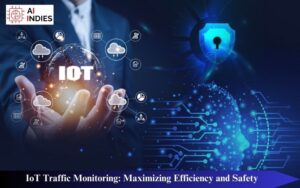In today’s digital age, data has become the new oil, fueling innovation and driving economic growth. From personal preferences to global trends, data surrounds us, shaping our lives in countless ways. This blog post will take you on a journey through the vast and ever-expanding data universe, exploring its importance, types, challenges, and opportunities.
The Importance of Data
Data is the cornerstone of decision-making and problem-solving in various fields. Businesses leverage data to understand customer behavior, optimize operations, and develop new products. Governments use data to improve public services and address societal challenges. Researchers rely on data to uncover new knowledge and advance scientific understanding.
Types of Data
The data universe is incredibly diverse, encompassing a wide range of types. Here are some key categories:
- Structured Data: Organized in a predefined format, such as tables or databases. Examples include customer information, financial data, and product inventory.
- Unstructured Data: Not easily categorized or structured, often in the form of text, images, audio, or video. Social media posts, emails, and medical records are examples of unstructured data.
- Semi-structured Data: Combines elements of structured and unstructured data, often represented in XML or JSON formats. Examples include web pages and sensor data.
Data Collection and Storage
Gathering and storing data is a critical step in harnessing its value. Organizations use various methods, including surveys, web scraping, APIs, and IoT devices, to collect data. Once collected, data is stored in databases, data warehouses, and data lakes, ensuring its accessibility and security.
Data Cleaning and Preparation
Before data can be analyzed, it often requires cleaning and preparation. This involves tasks such as removing duplicates, handling missing values, and correcting errors. Data cleaning is essential for ensuring data quality and reliability.
Data Analysis and Visualization
Data analysis involves extracting meaningful insights from raw data. Techniques like statistical analysis, machine learning, and data mining are employed to uncover patterns, trends, and correlations. Data visualization tools help to communicate these findings effectively through charts, graphs, and dashboards.
Data Governance and Security
As the volume and complexity of data grow, so too do the challenges of managing and protecting it. Data governance frameworks establish policies, standards, and procedures for data management. Security measures, such as encryption and access controls, are crucial for safeguarding sensitive data from unauthorized access and breaches.
Challenges and Opportunities in the Data Universe
The data universe presents both challenges and opportunities. Some of the key challenges include:
- Data Quality: Ensuring data accuracy, completeness, and consistency.
- Data Privacy: Protecting individuals’ personal information and complying with data protection regulations.
- Data Overload: Managing the vast amounts of data generated daily.
Despite these challenges, the data universe offers immense potential. Organizations can leverage data to:
- Improve Decision Making: Make data-driven decisions that are more informed and effective.
- Enhance Customer Experience: Personalize products and services to meet individual needs.
- Drive Innovation: Develop new products and services that leverage data-driven insights.
Data Ethics and Bias
- Ethical Considerations: Explore the ethical implications of data collection, use, and sharing. Discuss topics like data privacy, bias, and consent.
- Addressing Bias: Address the issue of bias in data, which can lead to unfair or discriminatory outcomes. Discuss techniques for identifying and mitigating bias.
Emerging Trends in Data
- Artificial Intelligence and Machine Learning: Highlight the role of AI and ML in data analysis and decision-making. Discuss applications such as predictive analytics, natural language processing, and computer vision.
- Internet of Things (IoT): Explain how IoT devices generate massive amounts of data and how this data can be used to improve efficiency, optimize operations, and develop new products.
- Edge Computing: Discuss the concept of edge computing, where data processing occurs closer to the source, reducing latency and improving real-time applications.
Data-Driven Innovation
- Case Studies: Share examples of how organizations have used data to drive innovation and achieve competitive advantages.
- Industry-Specific Applications: Discuss the unique applications of data in various industries, such as healthcare, finance, retail, and manufacturing.
Conclusion
The data universe is a vast and complex landscape, filled with opportunities for innovation and growth. By understanding the importance of data, its various types, and the challenges and opportunities associated with it, organizations can navigate this landscape effectively and unlock its full potential. As the data universe continues to expand, it is essential to embrace data-driven approaches and stay ahead of the curve.




